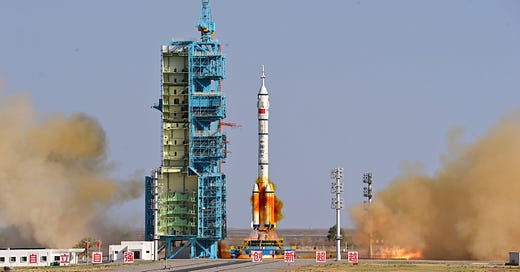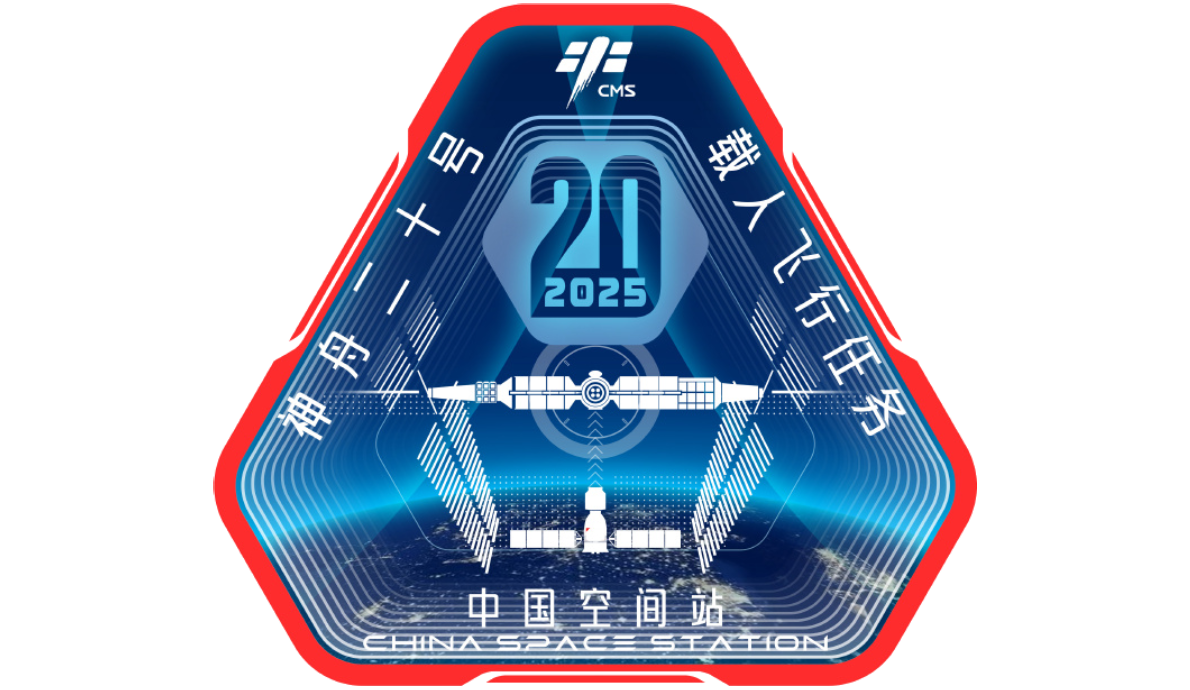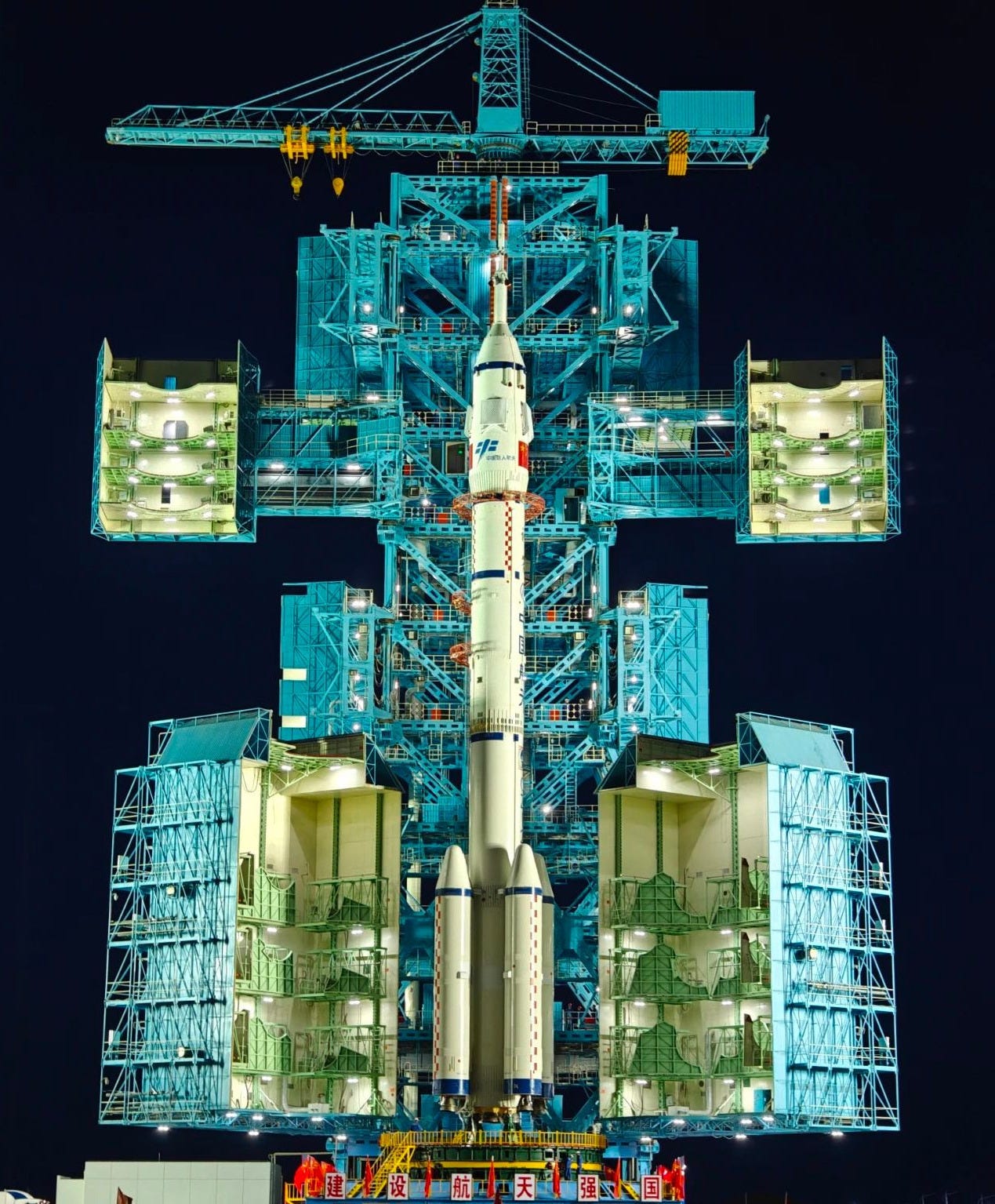Shenzhou-20 Mission Blasts Off! [Long March 2F/G Y20]
China's 15th crewed mission is heading for Tiangong.
At 17:17 pm China Standard Time (09:17 am Universal Coordinated Time) on April 24th, a Long March 2F/G blasted off from Launch Area 4 at the Jiuquan Satellite Launch Center. For the vehicle’s first of two planned launches this year, it carried the Shenzhou-20 spacecraft to low Earth orbit.
Following the launch, the Shenzhou-20 spacecraft deployed its two solar panels to begin generating electrical power for the rendezvous with the Tiangong Space Station. At the time of publication, the spacecraft is expected to dock to the Tianhe modules’ Earth-facing docking port around six and a half hours after liftoff.
The crew being launched to the space station will spend six months onboard the station. During their time onboard, the Tianzhou-9 cargo spacecraft will arrive carrying fresh supplies, along with possibly the first visits from the Qingzhou (轻舟) and Haolong (昊龙) commercial cargo spacecraft.
Recieving the new crew will be Shenzhou-19’s Cai Xuzhe (蔡旭哲), Song Lingdong (宋令东), and Wang Haoze (王浩泽). Shenzhou-19’s taikonaut trio has been onboard the station since October 30th 2024, almost six months ago.
Of course, three taikonauts were on board, having been revealed to the public yesterday.
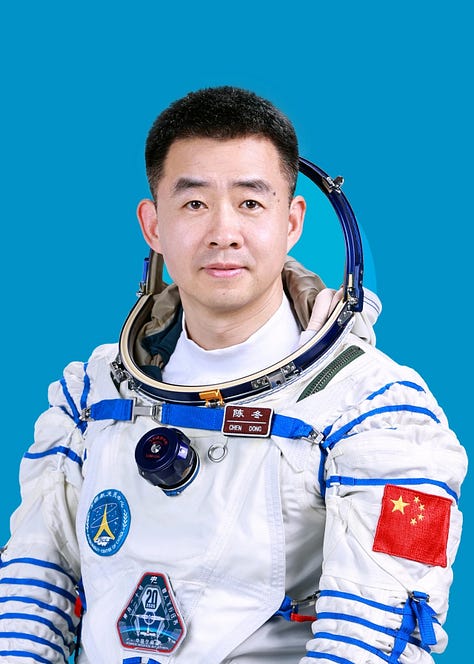
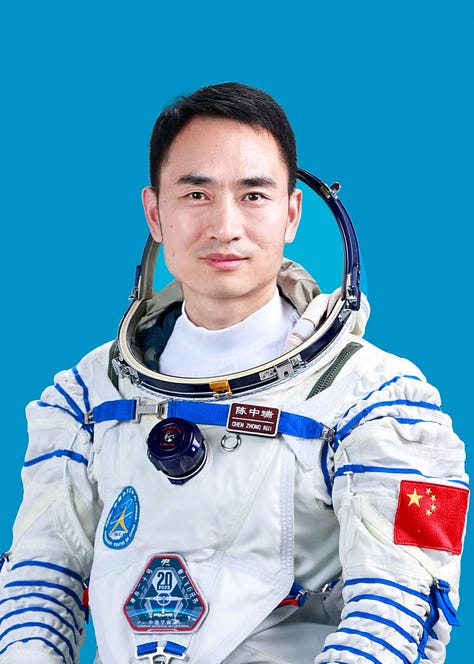

Chen Dong (陈冬)
For his third spaceflight, having flown for the Shenzhou-11 and Shenzhou-14 missions, Chen Dong of Henan province, born December 1978, is the Commander for the Shenzhou-20 mission. Chen was selected as a taikonaut in 2010 as part of the second batch.
Prior to his space career, Chen enlisted in the People’s Liberation Army Air Force in 1997 and joined the Communist Party of China in 1999. Following the Shenzhou-11 mission, he was awarded the Spaceflight Merit Medal (Third Class) along with the honorary title of hero taikonaut in 2016.
Chen Zhongrui (陈中瑞)
For his first spaceflight, Chen Zhongrui of Henan province, born October 1984, is the Operator for the Shenzhou-20 mission. Chen was selected as a taikonaut in 2020 as part of the third batch.
Prior to his space career, Chen enlisted in the People’s Liberation Army Air Force in 2003 and joined the Communist Party of China in 2005.
Wang Jie (王杰)
For his first spaceflight, Wang Jie of the Inner Mongolia Autonomous Region, born September 1989, is the Science Operator for the Shenzhou-20 mission. Wang was selected as a taikonaut in 2020 as part of the third batch.
Prior to his space career, Wang was an engineer from the China Aerospace Science and Technology Corporation and joined the Communist Party of China in 2009.
Crew details via China Manned Space Agency.
The Shenzhou spacecraft is currently China’s only operational crewed spacecraft and is used to ferry taikonauts to and from Earth orbit. Shenzhou consists of a service module, a re-entry module, and an orbital module, with a pressurized volume of almost fifteen cubic meters with a habitable volume of seven cubic meters. For generating power, the Shenzhou spacecraft has two solar wings with four panels each that are unfolded after launch, a rotating fixture also attaches them to the service module. Each Shenzhou spacecraft has a believed launch weight of 8,100 kilograms and an in-space mass of 7,840 kilograms.
The Shenzhou-20 mission is the 20th flight of the Shenzhou vehicle, and the 32nd for the human exploration program, including space station module launches and cargo spacecraft. It is also the 15th crewed mission from China and the 9th to the Tiangong Space Station.
Today’s launch was the 25th for the Long March 2F series, and the 571st launch of the Long March launch vehicle series. This was also the 22nd launch from China in 2025.
What is the Long March 2F/G?
This section is for those less familiar with China's Long March series of launch vehicles.
The Long March 2F/G is China's only human-rated launch vehicle, with it developed by the China Academy of Launch Vehicle Technology. All flights of the Long March 2F/G have had the boosters, first, and second-stage burn Dinitrogen Tetroxide and Unsymmetrical Dimethylhydrazine.
The payload capacity of the launch vehicle is currently as follows:
8,400 kilograms to low Earth orbit
Powering the first-stage are four YF-20B generating a combined 332 tons of thrust burning Dinitrogen Tetroxide and Unsymmetrical Dimethylhydrazine. Augmenting the thrust of the first-stage are four boosters, each powered by one YF-20B each generating 83 tons of thrust each for a combined booster thrust of 332, while also burning Dinitrogen Tetroxide and Unsymmetrical Dimethylhydrazine. The combined thrust of the first-stage and four boosters is 664 tons of thrust. The second-stage of the vehicle is powered by one YF-24B generating 85 tons of thrust, once again burning Dinitrogen Tetroxide and Unsymmetrical Dimethylhydrazine.
On the launchpad, the Long March 2F/G is 62 meters tall, with the Shenzhou spacecraft's launch escape system, and weighs 464,000 kilograms when fully fuelled. The first and second stages have a diameter of 3.35 meters, with the four boosters having a diameter of 2.3 meters, and the Shenzhou spacecraft's protective fairing has a maximum diameter of 3.6 meters.
So far the Long March 2F/G has only flown from the Jiuquan Satellite Launch Center, in the west of the Inner Mongolia Autonomous Region and the north of Gansu province.


